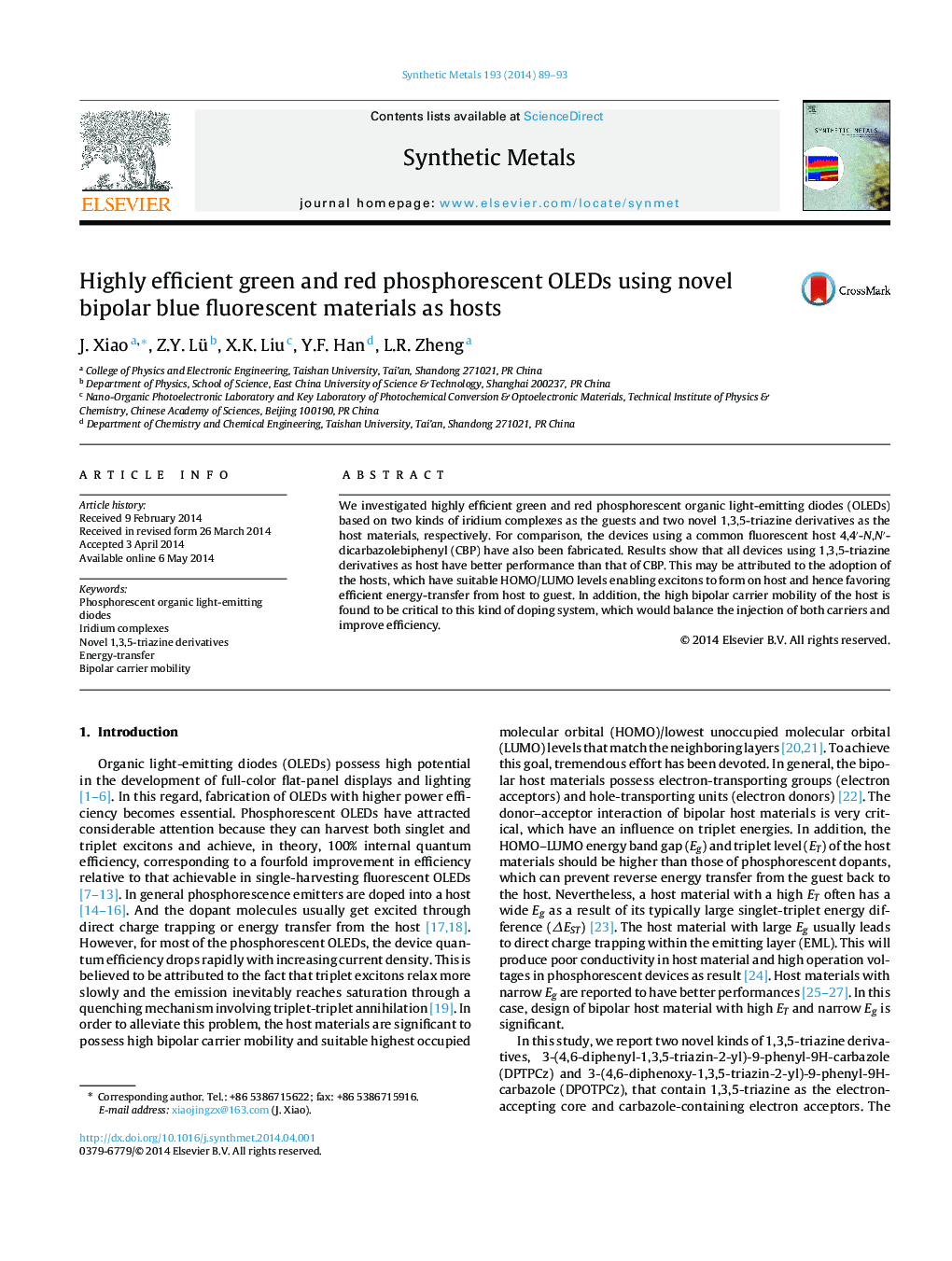| Article ID | Journal | Published Year | Pages | File Type |
|---|---|---|---|---|
| 1440983 | Synthetic Metals | 2014 | 5 Pages |
•We investigated highly efficient green and red phosphorescent OLEDs.•Two novel 1,3,5-triazine derivatives were used as effective host materials.•The high bipolar nature of the host is critical to this kind of doping system.•Suitable energy level is beneficial to efficient host-to-guest energy transfer.
We investigated highly efficient green and red phosphorescent organic light-emitting diodes (OLEDs) based on two kinds of iridium complexes as the guests and two novel 1,3,5-triazine derivatives as the host materials, respectively. For comparison, the devices using a common fluorescent host 4,4′-N,N′-dicarbazolebiphenyl (CBP) have also been fabricated. Results show that all devices using 1,3,5-triazine derivatives as host have better performance than that of CBP. This may be attributed to the adoption of the hosts, which have suitable HOMO/LUMO levels enabling excitons to form on host and hence favoring efficient energy-transfer from host to guest. In addition, the high bipolar carrier mobility of the host is found to be critical to this kind of doping system, which would balance the injection of both carriers and improve efficiency.
